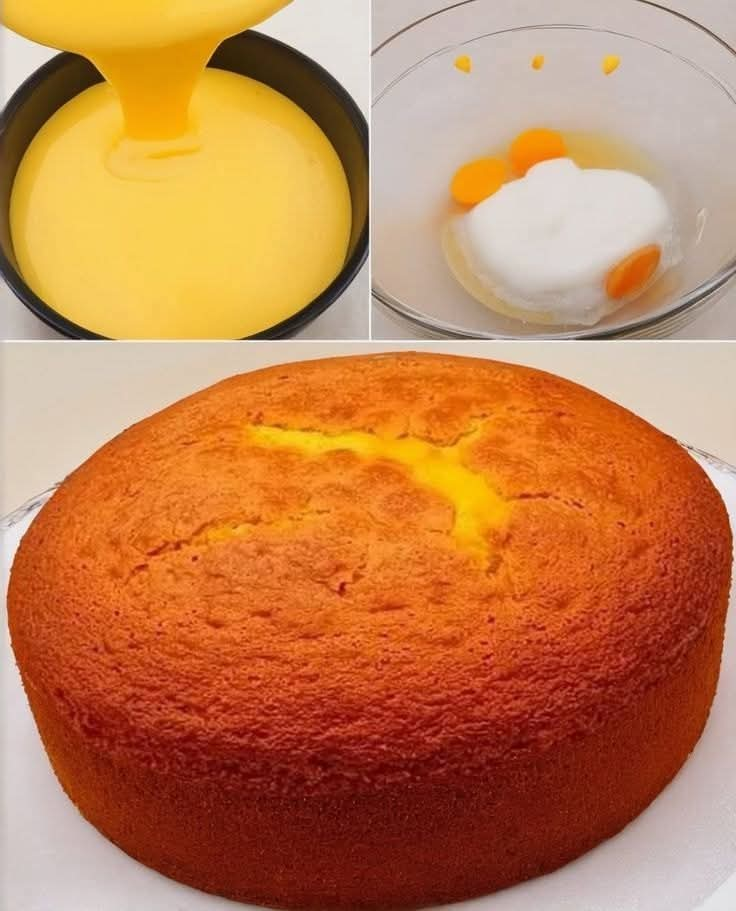Classic Golden Sponge Cake Recipe
🍰 Introduction
The golden sponge cake is a timeless dessert enjoyed across cultures for its light, fluffy texture and subtly sweet flavor. Whether served plain with tea or dressed up with cream and fruit, this cake is a staple in many households and bakeries. Easy to make, yet impressive to serve — it’s a true classic!
📜 History
The sponge cake dates back to the Renaissance era, originating in Europe around the 16th century. It became especially popular in England and later spread across the world. Originally made without baking powder, early sponge cakes relied on whipped eggs to achieve their airy structure — a method still used today in traditional recipes.
🥚 Ingredients
- 4 large eggs
- 1 cup (200g) granulated sugar
- 1 cup (120g) all-purpose flour, sifted
- 1/2 cup (120ml) milk
- 1/4 cup (60g) unsalted butter
- 1 tsp vanilla extract
- 1 1/2 tsp baking powder
- 1/4 tsp salt
🧁 Instructions
- Preheat your oven to 175°C (350°F). Grease and flour an 8-inch round cake pan.
- In a bowl, whisk together the eggs and sugar until light, pale, and fluffy (about 5–7 minutes).
- In a small saucepan, heat the milk and butter until the butter melts. Set aside to cool slightly.
- Sift the flour, baking powder, and salt into the egg mixture and gently fold to combine.
- Add the vanilla extract and the warm milk mixture gradually, folding gently until fully incorporated.
- Pour the batter into the prepared pan and tap it lightly to remove air bubbles.
- Bake for 30–35 minutes or until golden brown and a toothpick inserted in the center comes out clean.
- Cool the cake in the pan for 10 minutes, then transfer to a wire rack to cool completely.
🌿 Benefits
- Made with simple, natural ingredients — no preservatives.
- High in protein from the eggs.
- Can be customized with fruits, nuts, or flavors like lemon or chocolate.
- Great source of quick energy due to carbs.
- Perfect for festive celebrations or a sweet treat with tea.
🔬 Formation
The sponge structure forms when the beaten eggs trap air bubbles, which expand during baking. The flour and heat stabilize the foam, giving the cake its light, airy form. The fat from the butter adds moisture, and the milk helps create a soft crumb texture. Baking powder further assists in rising for a consistent dome shape.
🎯 Conclusion
The golden sponge cake is a perfect balance of flavor, texture, and tradition. Whether you’re a beginner or a seasoned baker, this recipe guarantees a satisfying result. It’s versatile, delightful, and a must-have in your baking repertoire. Serve it with your favorite topping, or enjoy it plain — either way, it’s always a winner.
❤️ For Cake Lovers
If you’re passionate about cakes, you’ll love how this simple recipe opens the door to creativity. Layer it with whipped cream and strawberries, glaze it with chocolate, or simply dust it with powdered sugar. This cake is a canvas for your sweet imagination.
👩🍳 Tips & Variations
- For extra moistness, substitute half of the butter with vegetable oil.
- Add lemon zest or orange extract for a citrus twist.
- Use this cake as a base for layered birthday cakes or trifles.
- Make it gluten-free by using a gluten-free flour blend.
- Store in an airtight container for up to 3 days, or freeze for up to 1 month.
